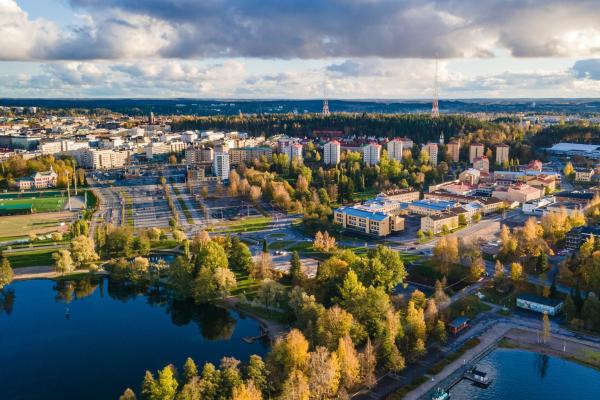Lahti, the capital of the Päijänne Tavastia region of Finland, has a population of 119,068. Lahti is situated approximately 100 kilometres to the northeast of Helsinki, the capital city of Finland on the southern bay of Lake Vesijärvi. After the Second World War, Lahti experienced rapid industrialisation that included population and economic growth.
This also led to significant environmental challenges, such as the eutrophication of Lake Vesijärvi and a higher dependency on cars in the city centre. The City of Lahti has addressed these challenges by setting up and funding the Lake Vesijärvi project, where university research groups, residents, local companies and the City work together to improve the lake’s condition.
The City of Lahti also set up Lahti City consortium which has invested €100 million on developing the city centre transport system such as with underground parking spaces, new bicycle lanes and wider pedestrian areas.
The City of Lahti displayed strong performance across the majority of the indicator areas and demonstrated great proficiency in Nature & Biodiversity, Noise and Water. It received top ranking in the areas of Air Quality, Waste, Green Growth & Eco‐innovation and Governance.
Read more
You can read more about Lahti’s application and presentation, as well as the EGCA Technical Assessment Synopsis Report for the 2021 award cycle. Additionally, the Lahti 1-Year Report is available for further insights.
For media, there is a video capturing the 2019 Awards Ceremony.
Discover all the Citizen Diaries from Lahti

Valtteri Bottas began his career when he was just six years old, racing karts in his hometown of Nastola in Finland.

In the winter of 2016, Eetu Floor was walking to a friend’s band practice in Lahti. On his way there, he chose a shortcut through the industrial area of Sopenkorpi where he found an overgrown industrial track and plot.

The Lahti Pelicans is a Finnish professional ice hockey team that plays for the City of Lahti, in the ‘Liiga’, Finland’s top professional ice hockey league.

Emmi Valli-Forsback from Lahti buys almost all of her family’s clothing and household goods second-hand; and rents a market stall to sell on what she no longer needs. She rarely considers buying something new if she can find it second-hand.

Bee doctor Kamran Fakhimzadeh knows what a miracle honey is: to produce a kilo of it, bees have to visit up to ten million flowers. At the same time, bees do us a huge favour by pollinating vegetables and fruit and berry plants.

Rikka-Liisa Aalto has always picked up litter in her local area. After becoming a mother, she started picking up litter almost every day. The Puhdas Päijät-Häme network was born out of a desire to make a connection with other people who care about the environment.

In 2015, in celebration of the 150th anniversary of the Sibelius Hall, the Lahti Symphony Orchestra initiated a project to help the City of Lahti reach its carbon emission reduction goals.

Fashion designer and entrepreneur Riikka Flink has been observing the clothing industry for over 30 years. She believes that ecology, sustainability, and responsibility are possible when production is closely monitored.
News about Lahti

For the first Op-Ed Green Cities newsletter we asked Pekka Timonen, the Mayor of the 2021 EU Green Capital Lathi, his views on what being a European Green Capital means.

